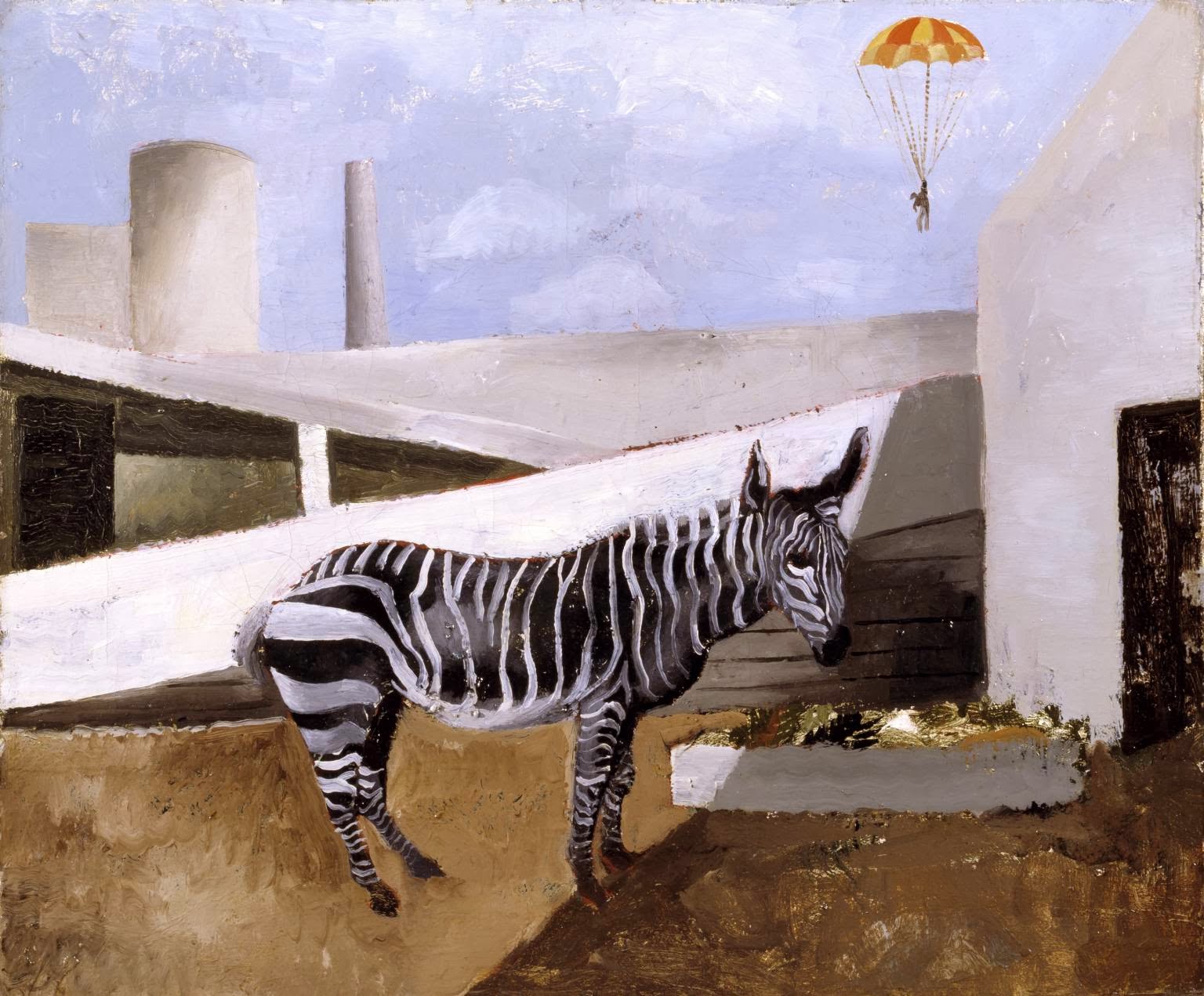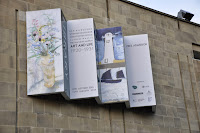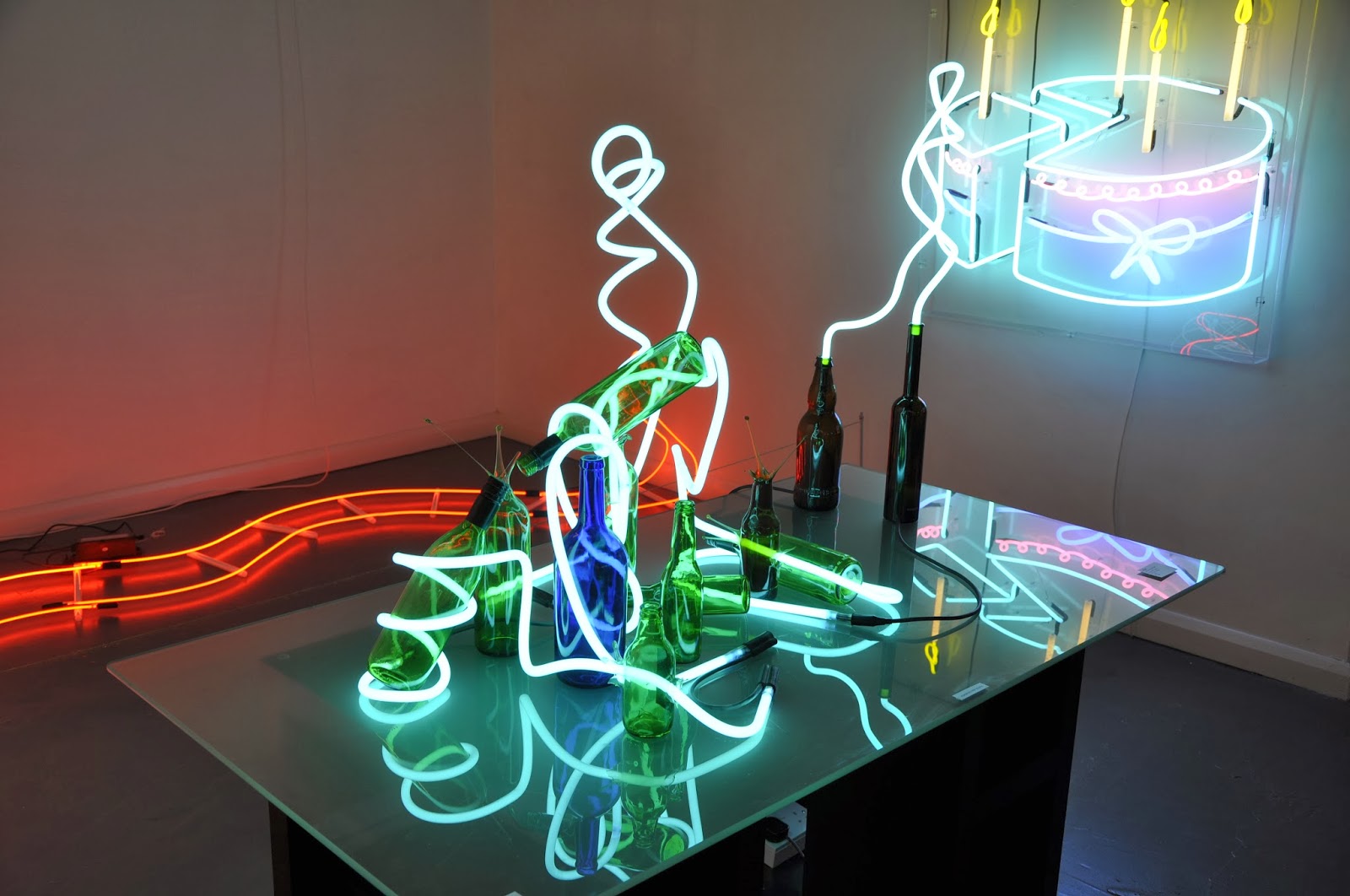Leeds Art Gallery
When I visited Leeds Art gallery, one of the main exhibitions which was showing was 'Art and Life' 1920-1931, a book which explores the artistic relationship between Ben Nicholson and Winifred Nicholson, as well as their friendship and collaborations with Christopher Wood, Alfred Wallis and William Staite Murray.
When looking around the gallery, the paintings seemed quite abstract and often featured nature as a dominant subject. I felt like a lot of the techniques by the artists Ben and Winifred Nicholson were quite childish when viewed beside one another. Personally, I didn't see a lot of technical skill involved in their paintings which made them difficult to view in a positive way.
 |
| Christopher Wood's Cumberland Landscape |
The work of Christopher Wood was more intriguing with his 'Cumberland Lanscape' and use of bold colour. It is evident that he has used quick mark making techniques to gain a sense of movement within his painting. The overall painting has a child-like quality to it, though as a viewer we know that it is much more technically advanced.
Cornwall: Feock and St. Ives
Ben Nicholson- "a sleeping beauty is countryside of southern foliage, sheltered creeks and wide expanse of water"
Nicholson met Alfred Wallis at St.Ives, therefore a lot of his work is inspired by this part of the country. This wonderful quote expresses his love for the countryside and the way this vision is put into his paintings.
 |
| Christopher Wood's Pill Creek |
Another painting which caught my eye was Christopher Wood's Pill Creek 1928.
Wood used oil and pencil on canvas for this painting, emphasising his use of mark making techniques. It appeared that when viewed up close, Wood had scratched back into the oil paint over several layers. This painting appears more detailed than some of his other works, though there is a greater sense of ability t capture the notions of the countryside.
 |
| Christopher Wood's Zebra and Parachute |
It does seem that out of all the artists in the exhibition, Wood was the only one who truly captured my attention. The final artwork I found captivating was his 'Zebra and Parachute' painting. It is surreal in the sense that the zebra appears to be out of context and in the background there seems to be one stuck on a parachute. The main element of this painting which initial caught my eye was the bold shapes and simplicity of the composition. This piece made me smile due to its quirkiness and total absurdity; it was nice to look at a piece of art in this way.
Leeds Art Fund 1912-2012
Joesph Mallord William Turner 1775-1851
 |
| Head of Cuckoo, Watercolour/ Graphite 1815 |
Further into the gallery, I found this tiny study of a cuckoo's head created by Turner. It was refreshing to see some pure talent and detail in his artwork even though the scale was small. The detail is quite amazing, especially considering it was made in watercolour which is a difficult media to use.
Munro House
After seeing more traditional artwork at Leeds Art Gallery, Julia Bickerstaff's contemporary pop-up exhibition was appealing to the eye. She displayed a mixture of photographs, paintings and installation-type sculptures.
In honesty, I was less impressed by Bickerstaff's neon light sculptures than her photography and paintings. There didn't seem to be any meaning behind the pieces and when I was trying to understand them I couldn't find any helpful information. Visually her pieces are aesthetically appealing but overall I found that this was all it could offer.
Graffiti in Leeds City Centre
After viewing artists work in various gallery spaces, it was great to stumble across some fantastic graffiti art in Leeds city centre. I also found some interesting placements of numbers which relate directly to my project.













No comments:
Post a Comment